It’s a little weird that Mercedes is selling subcompact front-wheel-drive sedans with four cylinder engines. Those attributes used to describe economy cars.
But the Mercedes CLA 250 – which is front-wheel-drive and comes standard with a small four cylinder engine – does not come with an economy car’s price tag.
It is, however, available with the most powerful four cylinder engine ever put into a production car.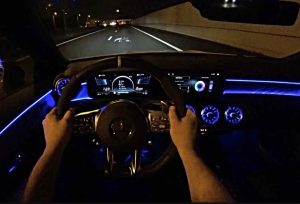
What It Is
The CLA is Mercedes’ smallest, lowest-priced sedan – starting at $44,400 for the CLA250. It is also the first front wheel drive Mercedes sedan, a major departure from the rear wheel-drive-based layout of every other Mercedes vehicle.
Opting for the optional all wheel drive system (Mercedes calls it 4Matic) raises the sticker price to $46,400.
Both of these iterations of the CLA250 come standard with a 2.0 liter four cylinder engine, paired up with a mild-hybrid system that is chiefly there to power the vehicle’s accessories (such as the AC) when the engine is cycled off to reduce fuel consumption (and C02 “emissions”) when the car isn’t moving, or coasting/decelerating.
The result is highway mileage approaching 40 MPG – making it the most fuel-efficient Mercedes vehicle in Mercedes’ U.S. model lineup.
But that’s not what makes this Mercedes so unusual. Other luxury-car brands such as Audi and Lexus also also sell small, front-wheel-drive-based sedans with small four cylinder engines such as the A3 and ES250, respectively.
What raises one’s eyebrows is how much more power Mercedes offers out its small four cylinder engine.
The $56,100 CLA 35 has the same-sized 2.0 liter four cylinder as the CLA 250 but instead of 221 horsepower – already strong for the class – the output increases to 302 horsepower.
As impressive as that it is – coming from just 2.0 liters and four cylinders – there’s more, from the same.
The $65,400 CLA 45 S also comes standard with a 2.0 liter four – but this version makes 416 horsepower. And that makes it the most powerful 2.0 liter four cylinder engine currently available in a production car.
What’s New for 2025
The CLA Class carries over into the new model year essentially the same as last year, with a few minor trim/color option changes.
CLA 45 S is a kind of pocket battleship on wheels: Small – with big guns.
Standard CLA 250 is a small luxury car that delivers almost economy car gas mileage.
Though small (and front-wheel-drive) like many economy cars, it doesn’t look like an economy car.
What’s Not So Good
Much more expensive to start than other small, entry-luxury sedans such as the Audi A3 and the Lexus ES250.
Rear seat leg and headroom are much less than up front due to compact dimensions and sloping roofline.
Tiny (11.6 cubic foot) trunk.
Every version of the CLA comes with a turbocharged 2.0 liter four cylinder engine, which makes it a lot like a lot of other vehicles currently on the market – including non-luxury brand vehicles that also have 2.0 liter fours.
This size engine has become almost a universal engine – recalling the Japanese in-line fours of the ’70s that were all very much the same even though they were made by several different brands such as Kawasaki, Honda, Suzuki and Yamaha. The reason for all these 2.0 four is because that is the ideal size and type of engne for making adequate power while also complying with increasingly strident CO2 “emissions” requirements.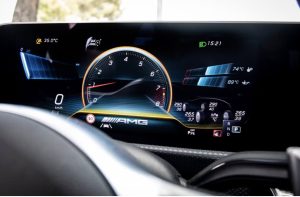
It is small enough to not “emit” much – especially when it’s not running (when the mild hybrid system is on) and big enough to make tremendous horsepower when running under boost.
In the CLA 250, the 2.0 liter engine produces 221 horsepower – which is significantly more power than you get out of the Audi A3’s standard 2.0 liter four, which makes 201 horsepower. The Mercedes also uses very little gas for a luxury car. The standard FWD version rates 26 city, 36 highway – which for some perspective is nearly as good as the 31 city, 40 highway you’d get out of a Honda Civic sedan, which is almost exactly the same size and also comes standard with a 2.0 liter four.
The CLA’s mileage is also nearly as good as the less powerful A3’s 29 city, 31 highway.
As mentioned earlier, a mild-hybrid system that cycles the 2.0 liter engine off as often as conditions allow is chiefly responsible for the CLA 250’s excellent fuel economy numbers. (The Audi A3 also comes standard with a mild-hybrid system).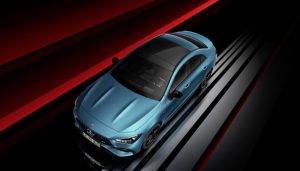
If you decide to opt for the optional all-wheel-drive (4Matic) system, the mileage dips to 25 city, 34 highway.
The CLA 35 comes standard with a higher-performance version of the same 2.0 liter four, with higher boost pressure and related upgrades that increase the engine’s output to 302 horsepower.
4Matic AWD is standard.
But – as Ed Sullivan said a long time ago – the really big news is the version of the 2.0 liter four that comes standard in the CLA 45 S. It makes an astounding 416 horsepower, which is astounding precisely because of the small size of this engine. To get a sense of just how astounding it is, consider that the current Corvette’s 6.2 liter V8 only makes 490 horsepower.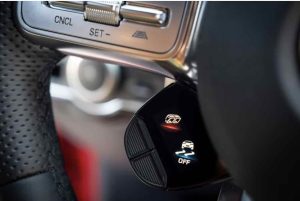
This four cylinder-powered Benz sedan is nearly as quick as the V8-powered Corvette, too. The latter gets to 60 in just shy of 3 seconds. The Benz can make the same run in about 3.4 seconds – which amounts to about half a car lengths’ difference at the end of the run.
Gas mileage with the heavy-hitting four is still 20 city, 28 highway – which is better than the ‘Vette’s 16 city, 25 highway.
An eight speed dual clutch automatic transmission is paired with all three versions of the CLA’s 2.0 liter engine but the AMG iteration’s offers more aggressive shift programming.
This is not a subtle car – and you’ll know it the first time you hear it. At first, you might think someone crawled under the thing overnight with a Sawzall and made off with the catalytic converter. Then you remember you left it in Sport Plus mode – which results in sounds like that erupting from the quad exhaust tips out back.
Good sounds.
The CLA 45 S is – in concept – a lot like the Admiral Graf Spee, the famous pocket battleship of World War II. The ship was much smaller than a battleship but carried battleship-sized guns. The idea was to create something more powerful than anything its own size that could outrun anything with guns its own size.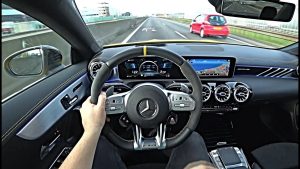
That’s what you’ve got here, on four wheels.
The four may not be big – in terms of its size – but 416 horsepower is a very big number for a very small car. And there aren’t many cars that can catch a car that is capable of launching itself from a dead stop to 60 MPH in 3.4 seconds. And even fewer cars that have four doors. A Tesla 3 – which is also small – can keep up with the Benz, but only briefly. The latter’s advertised best-case range of just 272 miles assumes you do not make frequent use of the “ludicrous” speed it is briefly capable of delivering because if you do, you’ll be stopping for a long wait long before you’ve covered 272 miles. This is the paradox of EVs, which tout high-performance that’s not practical to use much because if you do, you can’t use the EV much.
Or – rather – for long.
If you use the ludicrous speed the CLA 45 S offers, you probably won’t be able to go the 270 miles in city driving it touts, either. But even if you drain the tank after just 150 miles of driving, you’ll be back on the road in the less-than-five minutes it takes to refill the car’s 14 gallon tank. And you’ll have 378 miles of highway range, if you keep it under 80. I italicize city and highway to emphasize something important about EVs vs. other vehicles, which is that EV range is always posted as one (combined) number, which is arguably deceptive advertising because it does not convey the fact that EV highway-driving range is always less than the combined number advertised – and often much less, because an EV is always burning-through electricity when it is moving and more so at highway speeds. EVs go farthest when they’re not much moving much or even at all.
The take-home point is the CLA 45 S offers performance without the catch.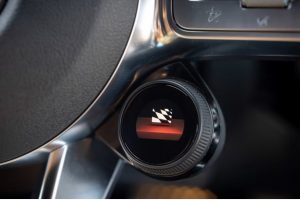
Though this is a front-wheel-drive-based car, Mercedes’ 4Matic system (standard with the CLA 45 S) is unusual in that it is capable of sending all of the engine’s power to the rear wheels, to simulate the driving feel of a rear-drive car. This matters a lot in a performance car, especially an expensive one. The buyer who spends $65k-plus probably does not want his car to feel like a $25k economy car when he floors the accelerator – especially in the curves.
This one doesn’t. The usual nose-heavy/ass light (and ass-not-powered) FWD-car understeer is not there.
The CLA 45 S’s 4Matic system also has a driver-selectable drift mode that allows tail-out powerslides. The suspension, brakes and cooling system are upgraded to complement all of this, of course.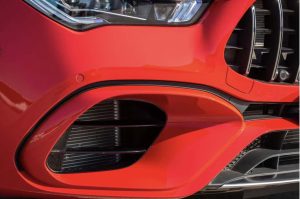
At The Curb
Like Graf Spee, the CLA 45 S looks impressive for its size. The body seems to have melted over the 19 inch AMG lightweight alloy wheels and thin-sidewall “summer” ultra-performance tires.
Width seems to add length, too.
Menace is added by the massive dual air intakes built into the left and right side of the AMF-specific front end. On the back, a NASCAR-looking ducktail spoiler to help keep the car’s tail from getting light at the 170-plus MPH speeds this thing can achieve.
Inside, this littlest Benz has the same kind of all-flatscreen displays that used to be exclusive to Mercedes’ largest, most expensive sedans as recently as about six years ago. One of the interesting things about that is what’s becoming common is no longer as exclusive.
The CLA 45 S gets an AMG-specific flat-bottomed steering wheel but all CLAs come standard with secondary/redundant thumbwheel controls for the audio system built into the steering wheel that let the driver change radio stations/adjust the volume and so on without having to take a hand off the wheel to touch the touchscreen. This littlest Benz also has the same ball-type air vents that can be adjusted in any direction. The AMG-specific sport buckets look track-day ready – and they are. But they are as comfortable as they are supportive, which is laudable. This is a track-day car (including available data logging) that can comfortably serve as an every day car.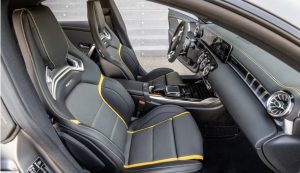
With a caveat.
While there is big-car space up front – including almost 42 inches of driver and front-seat-passenger legroom and nearly 39 inches of headroom for both – more than the space available up front in a Mercedes E-Class sedan – the back seats are really tight for both legs and heads. Legroom is just 32.9 inches – and headroom foes down to 35.7 inches, the latter due to the car’s sexy, sloping roofline.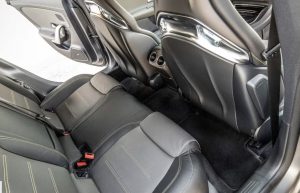
There’s also not much space in the 11.6 cubic foot trunk. On the other hand, there are back seats and these can make up for the space you don’t have available in the trunk.
Provided no one’s sitting back there.
The Rest
This non-AMG CLA’s chief negative isn’t so much that it’s front wheel drive but that it is really expensive for a small, front-drive sedan – even if it has the big Mercedes star in its grille. The generally similar Audi A3 stickers for $35,800 to start – which is nearly $10k less than the base trim CLA 250 lists for.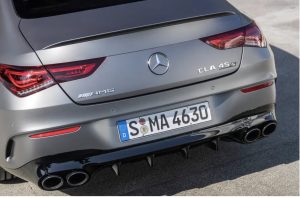
On the other hand, there is literally nothing else like the CLA 45 S – and that’s hard to put a price on.
The Bottom Line
The Graf Spee will be remembered for scaring the crap out of the entire Royal Navy. This little Benz with big guns is a lot like that.
. . .
If you like what you’ve found here please consider supporting EPautos.
We depend on you to keep the wheels turning!
Our donate button is here.
If you prefer not to use PayPal, our mailing address is:
EPautos
721 Hummingbird Lane SE
Copper Hill, VA 24079
PS: Get an EPautos magnet or sticker or coaster in return for a $20 or more one-time donation or a $10 or more monthly recurring donation. (Please be sure to tell us you want a magnet or sticker or coaster – and also, provide an address, so we know where to mail the thing!)
If you like items like the Baaaaaa! baseball cap pictured below, you can find that and more at the EPautos store!



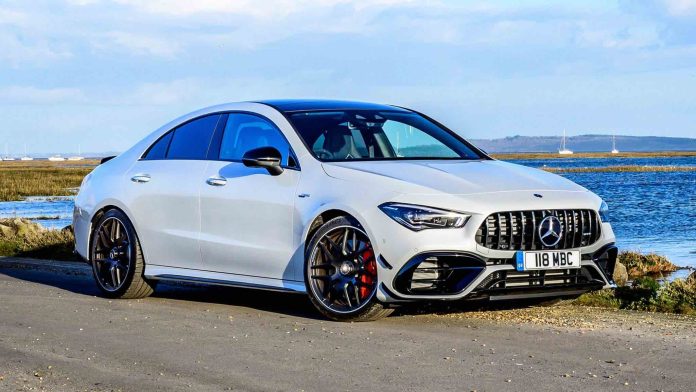


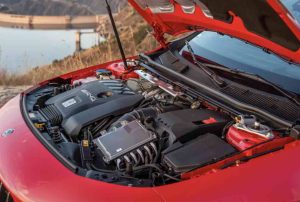
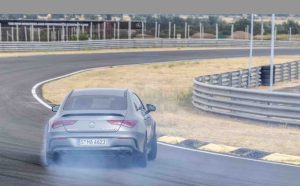



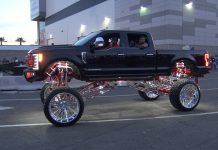

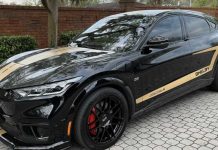


You don’t need 3700 lb …416 HP cars….800 lb with 97 HP is fine…
The Steyr Puch Bergspyder has better power to weight ratio then the 2024 Mercedes 416 HP turbo CLA 45 S…with no turbos…and is far more fun…and cool air cooled sound…the Mercedes sounds like a vaccuum cleaner….
Steyr Puch Bergspyder and the super fast driver Harald Mössler at Cividale 2019
2 Cylinder air cooled flat 2 engine… flyweight hill climb rocket –
Facts: 970 ccm…almost 1 liter / 97 HP / 8.000 rpm max. / 365 kg…about 800 lb / 195 km/h…120 mph… top speed…..
Light weight is better….
https://www.youtube.com/watch?v=8gSRijmftv8
Regulations killed a great car……
Cooler cars in the 1960’s…
What about a Fitch Phoenix…an American version of a 911…manufactured in Italy by Intermeccanica…a missed opportunity…
Fitch Phoenix….2300 lb…. GM….flat 6 cylinder….. air cooled… 2.8 liter …170 HP….212 Ft-Lbs torque…..4 Weber carburetors…4 speed stick shift…quicker then a 911….
1966 Fitch Phoenix msrp new $8,700…in 2024 dollars….$84,644….sold in 2014 for $253,000
1966 Porsche 911… 2400 lb…2 liter… 6 cylinder…160 HP…133 Ft-Lbs torque….5 speed stick shift……msrp new $6,490…$63,500 in 2024 dollars…average retail value now… in 2024…$160,000
1966 Porsche 911 msrp $6,490…$63,500 in 2024 dollars…the new 2024 911…at $116,000… has almost doubled in price…and got worse…over weight, computer driven, less engaging…feedback filtered out, full of spyware, etc….the 1960’s were better….
Fitch debuted his Phoenix in June 1966; not long afterward, Congress established the Highway Safety Bureau to dole out automotive safety standards. By the time these measures were enacted two years later, the Unsafe at Any Speed debacle had effectively axed the Corvair and, in the same swing…killed the Fitch Phoenix…..
Fitch-Whitmore’s GT prototype….killed by regulations….
His original plan had been to build 500 Phoenixes, but in the end just the one prototype was made. That car survives and it was sold by Bonhams in 2014 for $253,000,
https://www.youtube.com/watch?v=X1jwwLulEkU
Fitch-Whitmore’s GT…sold for $253,000….
https://cars.bonhams.com/auction/21916/lot/357/unique-prototype-from-the-estate-of-john-fitch1966-fitch-phoenix-chassis-no-107375w224558-engine-no-t0930rb/
“An 1,800 pound car with a 200 horsepower engine”
Powerful light weight cars….
The 1968 Porsche Bergspyder…
The term bergspyder can be translated as “mountain spyder” and was applied to cars prepared for hillclimb racing.
The 909 was not the only Porsche with this designation, but the 909 Bergspyder remains to this day one of the most extreme purpose-built racing cars ever to roll out of Zuffenhausen – a living example of what happens when racing engineers are given a singular objective and allowed to run wild.
It weighed just 384 kilograms ….that’s 847 pounds,
It was powered by an aircooled type 771 Flat 8 cylinder engine
First fitted with Webers carburetors, the engine was fitted with injection on the 909 and the little 2000cc engine output was a staggering 275 HP @ 9200 RPM.
It would do wheel stands…lift the front end….
https://www.youtube.com/watch?v=PsQG9YP-QPQ
Porsche Bergspyder competition…..
Ferrari 212
In 1964, Ferrari developed the Tipo 207 1.5- litre flat-twelve engine for its 1512 F1 car. This basic design by Mauro Forghieri was modified by Stefano Jacoponi to create the Tipo 232 2-litre engine used in the 212 E. Overall capacity of this engine was 1990.08cc, bore and stroke was 65mm X 50mm and the compression ratio was 11:1.
Initially, the engine produced approximately 280-290 bhp at 11,500 rpm. Two units of the Tipo 232 motor were produced, with the first scrapped following initial development and dyno testing. ……
Power output at the start of the 1969 racing season varied from 300 to 320 bhp at 11,500 rpm….depending on tune….car weighed 500 kg…1100 lb…….In 1961 F1 cars weighed 450 kg 990 lb, in 2024 F1 car weighs about 1800 lb.
Scuderia Ferrari entered the 212 E in the 1969 European Hillclimb Championship with Peter Schetty driving, supported by Ferrari engineer Gianni Marelli and two mechanics.[9] Racing in the sport class, the car dominated the competition,
NOTE: winning every race in which it was entered………..The 212 E Montagna sold to a private buyer at RM’s 2006 Scottsdale auction for $1,650,000….not cheap…..
11,500 RPM 12 cylinder engine sounds great…..
https://www.youtube.com/watch?v=rJIhrv8aps0
.In 1961 F1 cars weighed 450 kg 990 lb, in 2024 F1 car weighs about 1800 lb.
F1 cars have got big, heavy and ugly, like all the street cars…..and they lost their great sounding engines….
Soon they might be all Formula E…fully electric…no sound, no emotion…just dead….
The poor slaves…the masters are taking away anything fun…
Great sounding F1 cars…..
https://www.youtube.com/watch?v=B3nUKvuf6W4
I happen to have a 1950lb car with a 218 HP engine, and the handling is better than anything I’ve tried driving in recent times, including McLarens, Ferraris and Porsches. However, once you get up to around 100 mph, you’re using all your HP to move the air out of your way and not much accelerating happens, while those bigger HP cars still have spare HP available to accelerate, so it’s kinda weird, but at high speeds, the heavy cars accelerate lots faster despite similar power/weight ratios.
The 1968 Porsche Bergspyder…847 lb…275 HP….3.08 lb per HP…current GT3 race cars have 4.33 lb per HP….do wheelies through intersections…like a bike…the perfect daily driver….
Buy this BMW instead….it has a real engine….a diesel..
It doesn’t have the same problems with the direct injection…. as the direct injection gas engines….all the new gas engines have been screwed now….
also a deisel has no tune ups…no ignition parts….and lasts longer…it is a lot stronger engine….
The BMW 3 Series GT 335d….BMW makes cool diesels that are fast and economical….
With a tune this engine makes 590 lb ft of torque…..a torque monster….makes driving effortless and fun….
and gets 50 mpg highway…..which will give it 3x or 4x the range of a stupid EV…..on an 800 mile highway trip an EV will have to make three 30 to 60 minuter stops….this diesel…… zero stops……
this car just proves….diesel is the best solution….
https://www.youtube.com/watch?v=RxTsuCGKbFs
Here in Austin, I used to see the CLA and GLA used around downtown as Car2Go vehicles until Daimler shuttered the operation and sold what was left to Stellantis.
They always seemed like pilfered Chrysler designs when I looked at one up close.
High output 4 cylinders…a long time ago….
The 1979 Lancia Beta Monte Carlo Group 5 sports car weighed 1700 lb and had from….. 400 HP…1.5 liter Turbo…. to 525 HP..1.8 liter twin Turbo…. from their Lampredi 4 cylinder engine…
The 1983 Lancia 037 WRC winner…the last RWD car to win the championship….had a supercharged 325 HP 2 liter Lampredi engine….
The 1979 Lancia Beta Monte Carlo Group 5 sports car sometimes beat the famous, dominant, Porsche 935 K3 race car…the 935 K3 weighed 2300 lb and had 800 HP….
The famous Lampredi 4 cyl twin cam hemi (there was also a single cam version)
Ferrari engine designer designed engine in your Fiat/Lancia, etc
Lampredi (the famous Ferrari engine designer) who later worked for Fiat Lancia designed the twin overhead cam 8 valve hemi (later on 16 valve) 4 cylinder, which powered Fiat, Lancia, Lotus 7, Morgan, Alfa Romeo, etc., He ran Abarth.
it powered more World Rally championship winners then any other engine.
One of the best race car engines in history.
One of the best 4 cyl engines in history.
The Lampredi engine was in the 1983 Lancia 037, 1985 Lancia Delta S4 and Lancia Delta Integrale, with turbo and super charger…
in the S4….. the engine put out up to 1000 hp, in race trim 600 hp.
“One of the best race car engines in history.”
Henry Miller and Fred Offenhauser laugh at your little Italian four pot.
1000 HP in the 1980s? Hell, the Turbo Offy was running 1000+ HP in the early 1970s with unrestricted boost. How do you think those McLarens and Eagles lapped Indy coming close to 200 MPH with those billboard sized rear wings and their engines hanging out in the breeze?
Pure Offy Power. Which dated back to the Miller 4 cylinders of the 1920s.
Back before your Lampredi was a gleam in his daddy’s eyes.
A run from 1933 – 1980 boosting lap speeds from 120 to 200 MPH around IMS ain’t too shabby. 27 total Indianapolis 500 wins, powering every Indy 500 winner from 1947-1964, and gaining its last 500 win in 1976, 40+ years since it first powered a car around IMS.
And that doesn’t even count the Championship Car and Sprint Car wins it garnered, dirt and pavement, naturally aspirated, fuel injected, supercharged and turbocharged.
The Offy was a great engine…..
Offy engine…
A more powerful turbocharged version of the engine was used by Offenhauser in 1968, and gave Bobby Unser the win that year. The engine made 750 hp (560 kW) @ 9,500 rpm, from a displacement of only 168 cu in (2,750 cc). 2.7 litres…..
Outputs over 1,000 bhp (750 kW) could be attained, using around 44.3 psi (3.05 bar) of boost pressure. The final 2.65-litre four-cylinder Offy, restricted to 24.6 psi (1.70 bar) boost, produced 770 bhp (570 kW) at 9,000 rpm.
The Offy engine was a purpose built racing engine….
The Lampredi engine was a passenger car engine that was used in some race cars…..
In the Lancia Delta S4 the Lampredi engine with super charger and turbo made up to 1000 HP…but…from only 2 litres….500 HP per litre…
The Offy engine made up to 1000 HP but from 2.7 litres….a 36% bigger engine….370 HP per litre….
The 4 cylinder king for power output…. was BMW ….
Remembering the 1.5 litre 1,350-HP Turbocharged Four-Cylinder F1 engine… Built by BMW During the 1980s
the 1,499cc (1.5-liter) 4 cylinder F1 engine….
the most powerful F1 engine of all time, but its exact output is the subject of a decades-long debate. It was allegedly clocked at 1,280 (1983) and 1,350 hp (1986) in qualifying, however, according to Paul Rosche’s calculations, it was capable of well over 1,400 hp.
BMW 4 cylinder…1400 HP from 1.5 litres…933 HP per litre….
Lampredi 2.0 litre twin cam hemi 4 cylinder… ….500 HP per litre
Offy 2.7 litre 4 cylinder…..370 HP per litre
2024 Mercedes CLA 45 S…. 2.0 lt 4 cylinder….208 HP per litre…
You can get a tuned 2024 Audi RS3…with a 2.5 liter Turbo 5 cylinder…1/2 a Lamborghini V10….you can daily drive it….
It puts out around 1300 HP…it runs the 1/4 mile in around 8 seconds…far quicker then any new $1 million hypercar…..
Offy 2.7 litre 4 cylinder…..370 HP per liter…racing engine….
Audi RS3…with a tuned 2.5 liter Turbo 5 cylinder….520 HP per liter…a street car engine….
https://www.youtube.com/watch?v=OmTqHWS7IeQ
Here is a VW Golf Mk2 2.0 liter 4 cylinder making 1233 HP….one of the best 4 cylinder engines in history….and light weight….276 lb….
DSG VW Golf Mk2 4 motion (AWD) 1233HP powered by a VW 4 cyl 2.0 liter turbo engine
VW 4 cyl 2.0 liter turbo engine….616 HP per liter….
Offy 2.7 litre 4 cylinder…..370 HP per liter
0 to 100 kph = 1.66 sec
100 to 200 kph = 2.74 sec.
0 to 200 kph = 4.4 sec.
1/4 mile 8.26 sec. 170 mph
DSG VW Golf Mk2 4 motion (AWD) 1233HP powered by a VW 4 cyl 2.0 liter turbo engine
https://www.youtube.com/watch?v=R7t4C_0BZT4
Audi RS3…with a tuned 2.5 liter Turbo 5 cylinder….520 HP per liter…
2024 Mercedes CLA 45 S…. 2.0 lt 4 cylinder….208 HP per litre…
forget Mercedes….Audi has a better engine….
1000+ HP in the early 1970s ….with a 36% bigger engine….
The Lampredi 4 cylinder engine is far lighter then the Offy but makes more HP per liter….
Lampredi 2.0 litre 4 cylinder… ….500 HP per litre
Offy 2.7 litre 4 cylinder…..370 HP per litre
Offy 2.7 liter 4 cylinder up to 1000 HP…. engine weight….. 452 lb
Lampredi 4 cylinder twin cam hemi 2.0 liter 4 cylinder up 1000 HP…. engine weight 280 lb….
In the Lancia Delta S4….the Offy engine would be far too heavy….the car wouldn’t be competitive…..
The Lampredi engine powered more World Rally championship winners then any other engine in history……
Aurelio Lampredi…the Ferrari engine designer…..designed the Ferrari V12 engine that got Ferrari their 1st F1 win in 1950….
The first compact Mercedes…..The 1960 Mercedes-Benz W118/W119 project
Yes – it’s the W118 and W119 ….only …two 1.5 litre W118 were built….and two 1.7 litre. W119 were built…..four cars total…..
A further development was that Daimler- Benz had acquired a majority share in Auto Union in 1958 and took full control in 1959.
Auto Union was formed in 1932 with its four-ring badge standing for the constituent marques of Audi, DKW, Horch and Wanderer and in the early 1950s, it was mainly associated with small cars sold under the DKW name….2 cycle engines…
But when Daimler-Benz acquired Auto Union, the popularity of such cars was already on the wane as the German Bourgeois were now looking to four-stroke power.
In 1958 Daimler-Benz’s Chief Engineer Fritz Nalliger asked Ludwig Kraus of the “Construction Development” to develop an in-house mid-sized car, and the result was an extremely elegant FWD saloon in two or four-door guise. The initial idea was for it to be powered by a 1.5-litre “boxer” engine (no boxer engine was developed)…. the car would be called the the Mercedes W118
Kraus was seconded to Ingolstadt to take charge of a product modernisation project, and he was appointed Technical Director in late 1963.
but the prototype would eventually gain a newly developed a 1.7-litre in-line high-compression engine the M118……
The M118 was developed earlier by Daimler-Benz as part of a military project
The engines of the F103 series were a development of Daimler-Benz for a military project that never came into being. They were dubbed the Mitteldruckmotor (medium-pressure engines) because of their unusually high BMEP (mean effective pressure, as calculated from brake torque) values, which led to a good thermodynamic efficiency…the M118 was designed to run on multiple fuels, including diesel…so it was very strong…
The engines had spiral-formed intake channels that gave the fuel-air mixture a good swirl. The engine had Heron-type combustion chambers with broad squish bands, further enhancing the mixture swirl and aiding good combustion. These features made it possible to use very high compression ratios for the time. The initial engine version had a CR of 11.2 to 1 for 98 RON fuel and even the engines intended for 92 RON fuel had a CR of 9 to 1, which was a very unusually high value for the time
the car was called the Mercedes W119. When it was unveiled circa 1960, it seemed logical that it would be made by Auto Union as they had extensive experience of building small cars.
Instead of building the W119 Mercedes……. the design was tweeked to make the DKW F102 was built instead………..(later rebadged as an Audi)
The result was the 1963 DKW F102 …later called the Audi F103…sedan, an uncluttered three-box design with thin pillars and a large greenhouse note………(a modified mercedes W118 design).
curb weight, 910 kg / 2006 lbs
and such technological developments as the inboard front disc brakes…..but….. Under the bonnet was a 1.2-litre two-stroke unit but this was now too associated with ageing machinery built in the DDR. ……the M118 engine wasn’t available then….it was used later on in the Audi F103….
In 1964 Daimler-Benz sold its subsidiary – it wanted the funds to construct a commercial vehicle plant – to Volkswagen, and the idea of a generation of compact four-stroke cars bearing the three-pointed star seemed dormant.
But two key assets were also transfered to VW: the M118 engine project and its creator, Ludwig Kraus.
Kraus remained with Auto Union and to revitalise the F102;
his solution was to longitudinally mount the 1.7-litre M118 engine from the Mercedes W119 in the bay of the DKW……DKW’s F102 now renamed the Audi F103…..
The Mercedes M118 four-cylinder four-stroke medium-pressure engine…….. was installed in Audi 60, Audi 75, Audi 80 and Audi Super 90…..it was called the EA827 in the Audi 80….then in the Audi 100… EA831…..from 1968, with a displacement of 1.9 liters and 100 hp…….in the Audi 100 the M118-derived 1.9 -litre was called the EA831 ….,
Later, the EA831 with an overhead camshaft driven by a toothed belt, ended up in the Audi 80, the VW LT, the VW Golf, the AMC Gremlin, the Porsche 924..in the 924 it was called the 047…in the 924 turbo it was called the M31…. and served as the basis for many VW engines…like the famous 1.8 20vt….evolving into today’s VW Audi 4 cyl engines….the EA888
The legendary Audi 5 cylinder engines….
VW/Audi 5 cylinder engines……The first of the 5 cylinders was based on the new in-line 4 EA827….which evolved from the M118….. . That engine was the one used throughout the Audi and Volkswagen range in the 1970s and 80s.
Volvo also provided the 240 with a VW two-liter five-cylinder variant for a while,
VW six cylinder version….A 2.4 liter variant with six cylinders is being developed in collaboration with Volvo. It debuted in 1978 in the Volvo 240 and shortly afterwards in the large Volkswagen LT. Volvo will also provide the 240 with a two-liter five-cylinder variant for a while, the same engine that Audi installs in the 100. As with the four-cylinder, the possibilities of a turbo are also seen for the six-cylinder. With turbo and intercooler, the Volvo 740 is even the fastest production diesel for some time. Volvo eventually uses the Volkswagen six-cylinder in the 940 and 960 until 1996.
Before the four-stroke F103 was launched in August 1965, VW decreed that it would not bear the familiar name and, as a decisive break with the past, the familiar DKW badge was replaced by a revival of the Audi brand which had been dormant since 1939.
Auto Union was formed in 1932 with its four-ring badge standing for the constituent marques of Audi, DKW, Horch and Wanderer
DKW’s F102 later renamed the Audi F103 used a Mercedes-derived engine and tweaked styling of the W118/W119 Mercedes…….
Audi “Audi” F103 – Audi 60, 72, 75, 80 & Super 90
https://www.youtube.com/watch?v=b7NJtry5PAI
The original Mercedes small car…renamed the Audi F103…was cooler…inboard front disks, column shifter, no seatbelts…mostly metal…very little plastic….2006 lb…not 3700 lb…..the DKW version was even cooler…a 2 cycle engine….
No computers, no safety crap, totally analog and mechanical, won’t rat you out or crash you,
1st generation Mercedes small car ….MSRP about $23,000 in 2024 dollars….
Mercedes small car today 2024 …$44,000…costs almost twice as much…because filled with computer spyware crap etc., weighs almost twice as much….less reliable by far…and way way more depreciation….
There was an F103 for sale on Car and Classic in England for £8995…..$11,676 U.S…..not much depreciation for about 68 years….
The 1960 cars were far better….
“The $65,400 CLA 45 S also comes standard with a 2.0 liter four – but this version makes 416 horsepower. And that makes it the most powerful 2.0 liter four cylinder engine currently available in a production car.”
How does that compare to the original 4 cylinder Mercedes engine in the 1st generation Mercedes small car made in the 1960’s?….
Here is a 1980 Porsche 924 Turbo 2 litre 4 cylinder……in this application called the M31… that was an evolution of the original Mercedes 4 cylinder engine, in the 1st generation Mercedes small car made in the 1960’s…
Davide Cironi restored/modified it….bigger turbo, modern fuel injection system, intercooler, the result…a 429 HP…. 2600 lb monster….13 more HP then the $65,400 CLA 45 S …..and it is 1100 lb lighter, rear real drive, better balanced, handles better….drifts better…and carries 4 people….
NOTE: the 924 Turbo Carrera GTR version of this car was 2000 lb…it can be lightened…in IMSA race tune it had 550 HP…from that M31 engine….better power to weight ratio then a new 2024 GT3 race car…..which are around 2600 lb and 600 HP…
https://www.youtube.com/watch?v=N6jtKgrvEu4
924 Turbo Carrera GTR version of this car was 2000 lb…it can be lightened…in IMSA race tune it had 550 HP…..best commuter car ever….
A friend has the 35 version of this car – though less powerful it’s still a lot of fun.. A good way to have a weekend sports car yet able to squeeze the kids in the back via their own set of doors…. Unfortunately the car did have a lot of gremlins and went back to the dealer a number of times (he got one of the first versions in the UK to use the 35 version of the engine, which launched before the 45). Lots of reprogramming and changing crap. While it was a ton of fun I dont think it’s wise keeping these beyond the warranty (or at least that first batch).
As an engineer, the horsepower per liter is impressive. This thing will be a nightmare to maintain 10+ years from now.
A lifetime of driving experience leads me to the certainty that despite 400+ HP, I’ll be passing plenty of these in the right lane.
Ugh!
Eric, on a side note: Has Mercedes seen the error in their ways, and put you back into the press fleet rotation?
More money for less…Mercedes figured out they could sell high tech instead of quality…goodbye quality….
Is Toyota Quality Going Down?…this tech says yes…but the new trucks are worse then the cars…
He says all new cars quality is going down…one reason is it costs a lot more to build cars since 2019….costs went up….to build the same quality car as in the 1990’s…the car would cost too much….
So they sell more cheap junk now…cutting costs…flat screens replace mechanical switches, electronic throttles and parking brakes, electric steering, etc.,
These highly stressed small tubo engines are more fragile…neglect constance maintenance…they blow up….the old Toyota’s…you could skip maintenance and they wouldn’t blow up right away…not anymore…
An old Mercedes diesel will have a longer life then this new high output 4 cylinder….
https://www.youtube.com/watch?v=qsFPk6-igBg
Great review Eric. I enjoyed it.
I was curious so did some math:
2.0L/416HP = 208HP/L and 104HP/piston
For comparison, the CT4 V Blackwing is 3.6L/472HP
3.6L/472HP = 131HP/L and 78HP/piston.
Pretty interesting. And for about the same price I would much rather have the Blackwing mostly because it’s made in US and the biggy is it’s RWD
Thanks, Chris!
I wish there were more like this… but the Range Rover that’s coming today ought to be ok, too!
Methinks good snow tires will be needed if you insist on driving this pocket rocket in the snow. Looks like a fun car if you don’t need to use the rear seats for the kids.
When car manufacturers come to grips with the fact the climate change hoax is indeed a hoax, they may then realize that they should build & sell what consumers want, not what the WEF/EU/American leftists/etc push.
Case in point: https://www.zerohedge.com/markets/bmw-says-eu-ban-gasoline-cars-2035-no-longer-realistic
416 Horsepower out of any 4 banger is an engineering marvel irrespective of what else you think about the brand, car, price, etc. If you told someone in the 80s that you could get 400+ horses out of a 4 cylinder they would have thought you were cracked.
I did drive a Z06 Corvette which was the top of the line ‘Vette and even that mighty tuned V8 only made 405HP at the time in the early 00s. Front wheel drive cars with that kind of power are weird to me though. Like 2 things that simply should not go together. 🤷♂️
‘416 Horsepower out of any 4 banger is an engineering marvel ‘ — Useranon99
In Before Time units, that’s 3.4 horsepower per cubic inch — when 1.0 horsepower per cubic inch used to be top-drawer. Back then, you would have needed a supercharger, a radical cam that left the engine incapable of idling, nitro fuel and straight pipes to get such a number. And it wouldn’t have been street-drivable at all.
But on a bang-for-the-buck basis — an economic analogy to horsepower per liter — the CLS 45 S is less impressive. That is, for half the price, one could obtain 80% of the performance.
There’s also the chronic health problem that afflicts today’s cars — obesity. This 107-inch wheelbase compact sedan tips the scales at a zaftig 3,791 lbs. Imagine what 208 horsepower would do in a 1,900 lb roadster at half the price.
Oh wait, please don’t! That would be illegal and Wrongthinkful — the automotive equivalent of ephebophilia. Believe it or not, in the lost world of the mid-20th century, it was legal to buy lithe, slender sub-2000 lb ‘sports cars’ with no air bags, no seatbelts, no nothin’. And no one batted an eye at hairy-handed gents pawing these fawn-like little beauties to their heart’s content. :-0
You raise some really good points, Jim – thank you. You are absolutely right. An 1,800 pound car with a 200 horsepower engine would deliver comparable performance and probably better mileage for probably a third (or less) the cost. Even I sometimes get caught up in the rip tide…
Mercedes is the best engine builder?…Mercedes engines are the quickest in F1 right now….